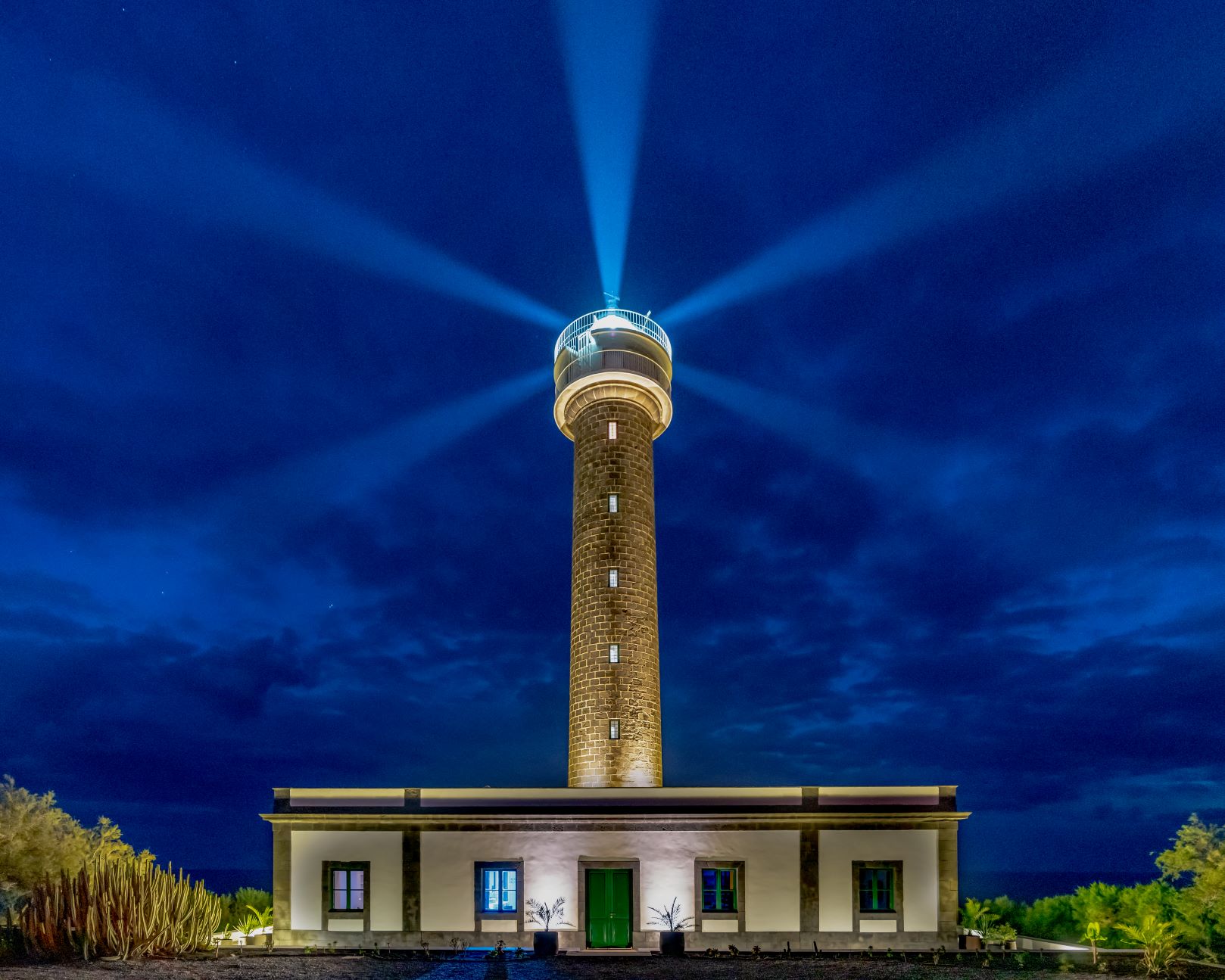Punta Cumplida Lighthouse
IALA Heritage Lighthouse of the Year 2023 Nominee
Location: SPAIN - Canary Islands, La Palma Island
Lighthouse Operator: Puertos del Estado

Lighthouse Description and History
(Text extracted from nomination form submitted by Port Authority of Santa Cruz de Tenerife 2023)
The Punta Cumplida Lighthouse stands 34 metres high and 63 metres above sea level and is located on the northeast side of La Palma Island. The structure of the lighthouse is a conical black stone tower with a white domo at the top. The nominal range is 23 nautical miles, although it was seen 40 nautical miles away during good atmospheric conditions.
The first maritime lighting plan for the Canary Islands published in 1857 established the need of a lighthouse in the island. The project was approved in 1861 and the construction contract was awarded to José A. Rodríguez at a cost of 505.000 reales (126.250 pesetas).
The lighthouse was lightened for the first time in 1867 and was built following a similar style to others 19th Canarian lighthouses. In 1982 the structure was restored and increased the final height by 4 m adding a second balcony to the domo.
In 2010 the Punta Cumplida Lighthouse appeared in a set of six commemorative lighthouses stamps issued by the Spanish postal service (Correos). In 2011 the lighthouse was converted to operate using Light emitting diode (LED) bulbs, the first lighthouse in Europe to do so.
The original Fresnel lens was placed inside the ferry terminal in the Santa Cruz de Tenerife port until 2013. Since then the Fresnel lens returned to La Palma and is now located in Barlovento (municipality where the lighthouse is placed).
In 2017 the “Faros de España” project allowed the construction of a tourist accommodation.
Reason For Nomination
(Text extracted from nomination form submitted by Port Authority of Santa Cruz de Tenerife 2023)
Intrinsic Heritage Interest of the Lighthouse
1. One of the first lighthouses built in Canary Islands and the first lighthouse built in La Palma island
2. The tower structure was built with volcanic stones
3. First European lighthouse using LED technology bulbs
4. One of the most powerful range (nautical miles) lighthouse under the administration of the port Authority of Santa Cruz de Tenerife
5. The most powerful range (nautical miles) lighthouse in La Palma Island
The Canary Islands are placed in a strategy location for maritime routes connecting South America and Africa with Europe. In this context, Punta Cumplida lighthouse due to it location has taken an active role on navigation safety on these routes.
Punta Cumplida lighthouse and the island of La Palma have gone through very difficult times, first during Corona virus and directly after with the eruption of the volcano. The lighthouse was a symbol for hope and security and many local people came to visit it, while not much else was possible during lockdown and ash clouds days.
Conservation
Originally, the lighthouse was maintained by a group of lighthouse keepers whom used to live on the constructed building next to the lighthouse tower.
In 2017, “Faros de España” project allowed the construction of a tourist accommodation in the lighthouse. After an internal remodelling keeping the external structure unaltered, the Punta Cumplida lighthouse become the first operative lighthouse used for this propose in the Canary Islands.
Public Access and Education
In order to educate the public about the heritage of the lighthouse and the important of these structures in the context of aids to navigation several efforts have been made from the Port Authority of Santa Cruz de Tenerife.
Among the efforts done stands out a photography contests with the aim of visibilize these structures or the simultaneous switched on of the lighthouses manage from the Port Authority of Santa Cruz de Tenerife during the World Marine Aids to Navigation day.
Nowadays the annex building is used as a tourist accommodation allowing their guest to visit the lighthouse, opening to the public the oldest lighthouse of La Palma island.

